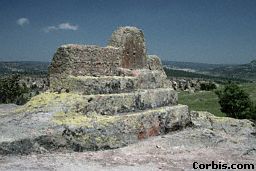| Group | Single |
| Geography | Was spoken in Central and West Anatolia |
| History | The Phrygians are believed to have been an Indo-European people who entered Asia Minor from Thrace about 1200 B.C. and who seized control of its whole central tableland. The most up to date research shows the Phrygian relationship to have been closer to Armenian, even while Thracian has an origin in common with it. The study of the language is made especially difficult by the fact that there is not much to research: we can only judge by several tablets and inscriptions, glosses containing mostly personal and place names. The inscriptions date back to the period between the 8th century BC and 3rd AD. Records exist of numerous kings, bearing alternately the names of Gordius and Midas, but their power was apparently broken by the invasions of the Cimmerians in the 7th century B.C.In the 6th, Croesus, king of Lydia, conquered all that was left of Phrygia, which in turn passed successively under the rule of Persia, then Macedonia, Pergamum and Rome. |
| Phonetics | The phonetic system of the New Phrygian period (from the 2nd to the 3rd century) is close to that of Greek. There are 5 vowels (with no opposition of long and short), 16 consonants and diphthongs ai, au, ei, oi. Phrygian is considered a "satem" language though this question is still under discussion. |
| Nominal Morphology | Phrygian preserved a flective system of Indo-European nouns. There were three genders 7 cases (ablative disappeared). Almost all types of declension are similar to Greek ones. |
| Verbal Morphology | In the verbal structure there were such tenses as the aorist, the imperfect, the future and the present. Three moods and three voices exist. A peculiar endings are the medium voice markers with -r found also in Italic, Tocharian, Celtic and Anatolian. Phrygian was among those Indo-European languages which used the augment in past tenses (e-daes 'he established', Sanskrit a-dht) |
| Lexicon | Mostly Indo-European, with a lot of Greek elements |
| Writing | Phrygian alphabet, very similar to the Greek script |
| Close Contacts | Rather close ties with Greek, Armenian and Indo-Iranian languages are discovered, there are common features with Albanian, Thracian, Baltic and Slavic. Pisidic may be a possible relative, at least it had significant Phrygian elements. |
| Sample | ios ni semoun knoumane [kakon]
abberet a[i]nou [m.]mon[ka]n tos ni me zemelO ke deos k./e tiE tit tetikmenos e[it]ou. Whoever harms this grave, will be chased both on earth and by gods. (Neo-Phrygian) |
| Picture |  |
| More info |